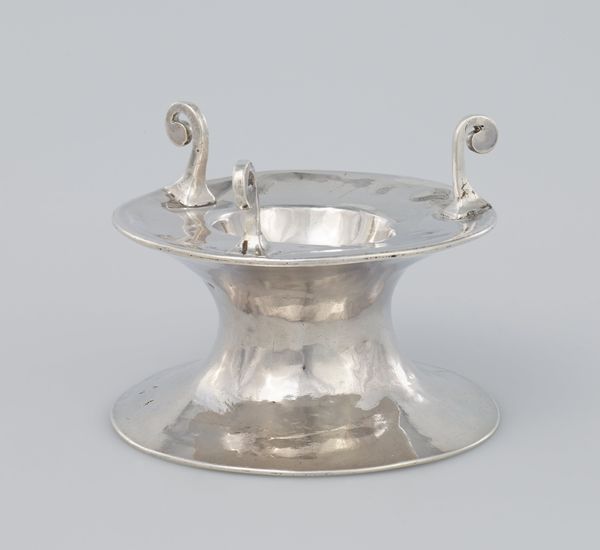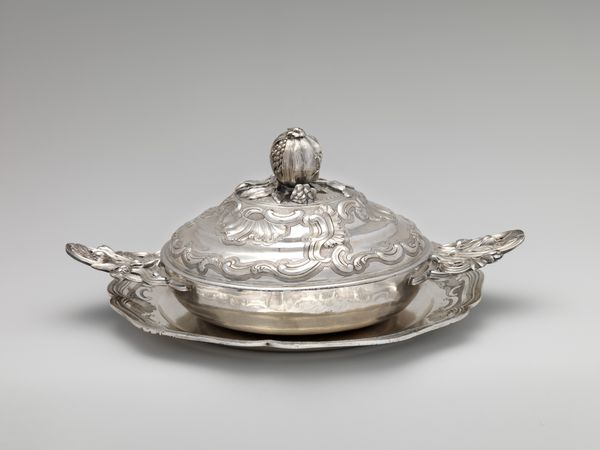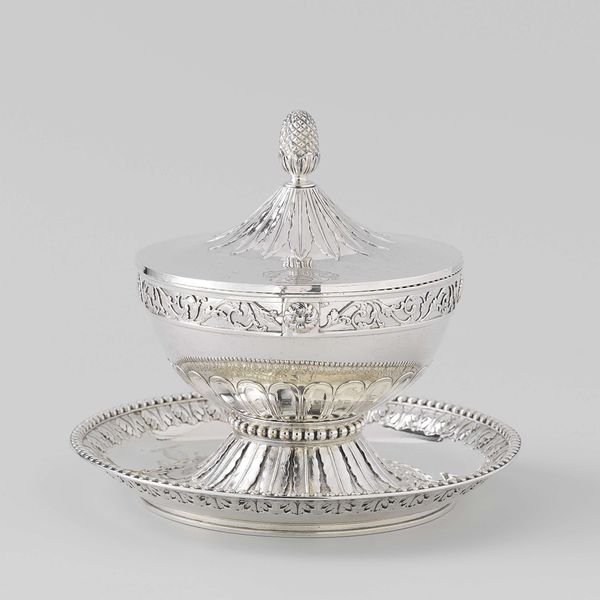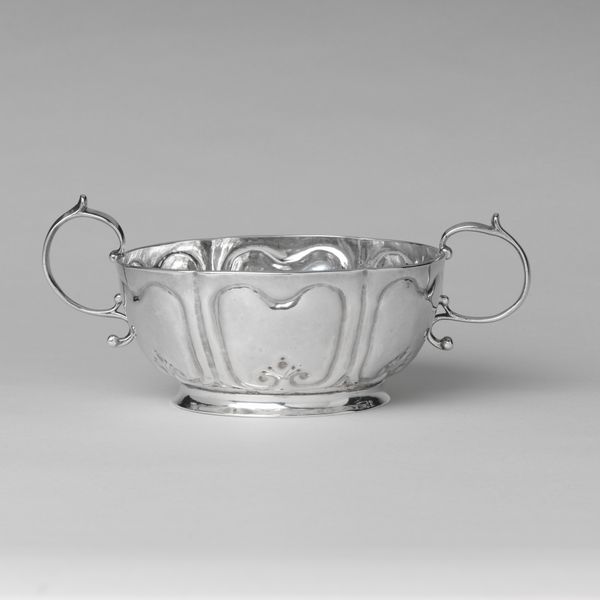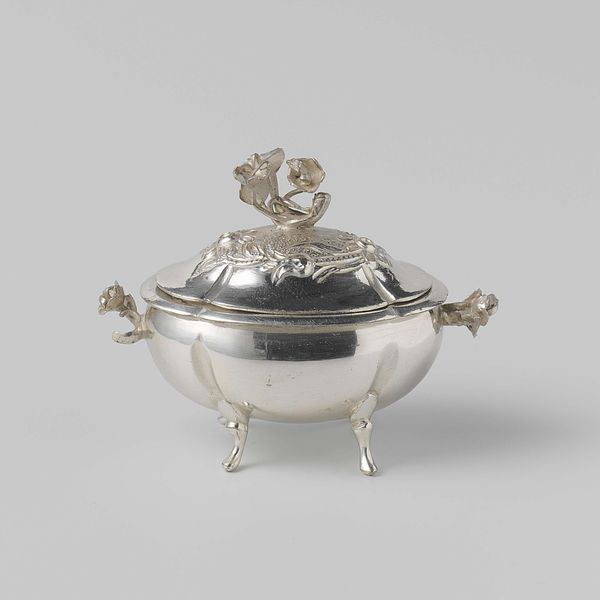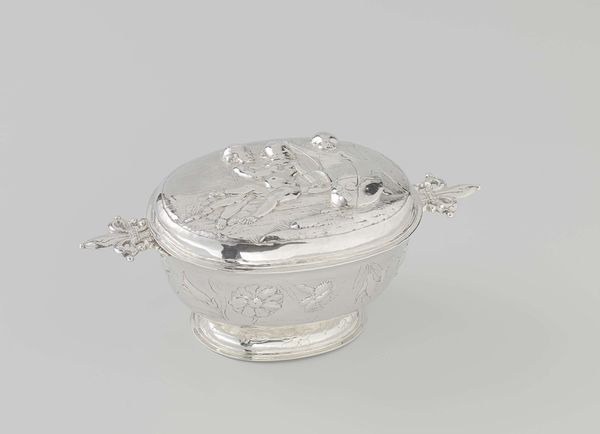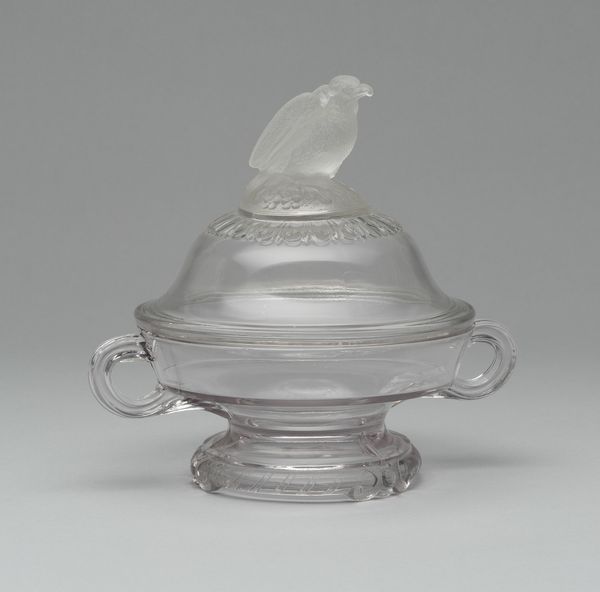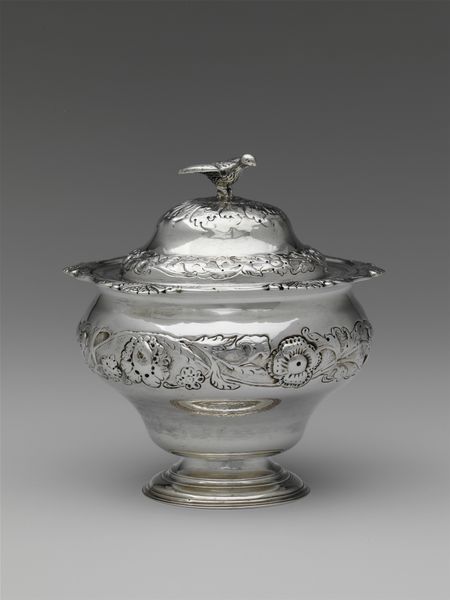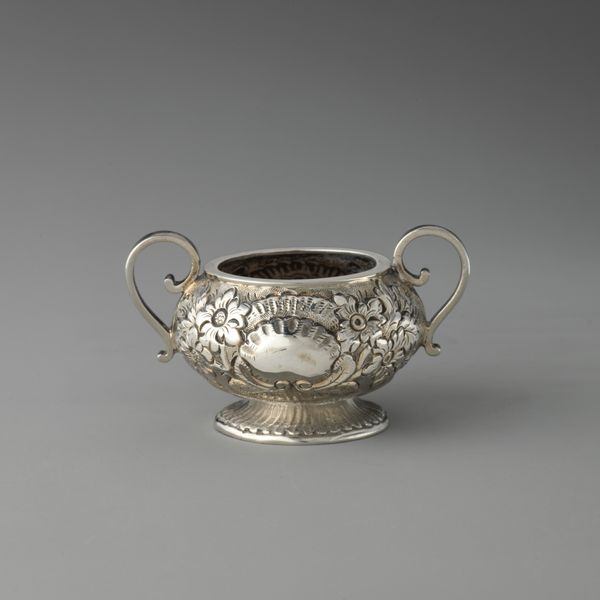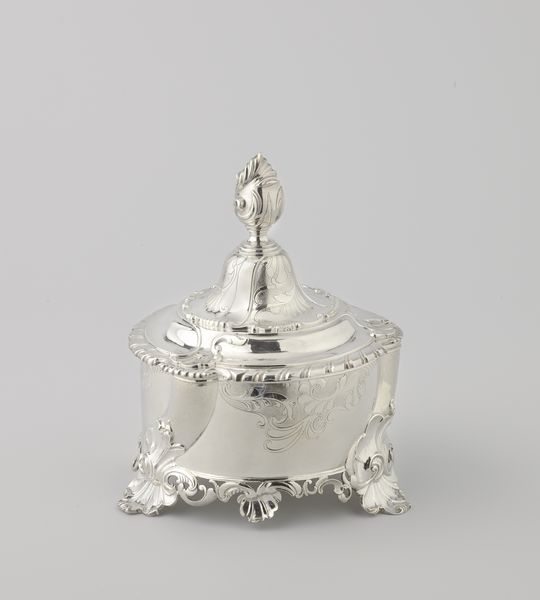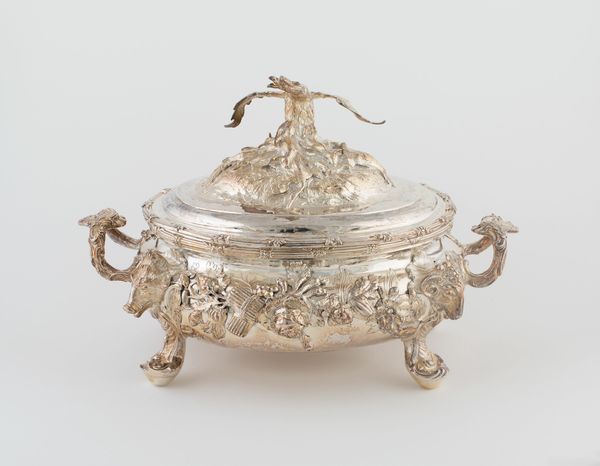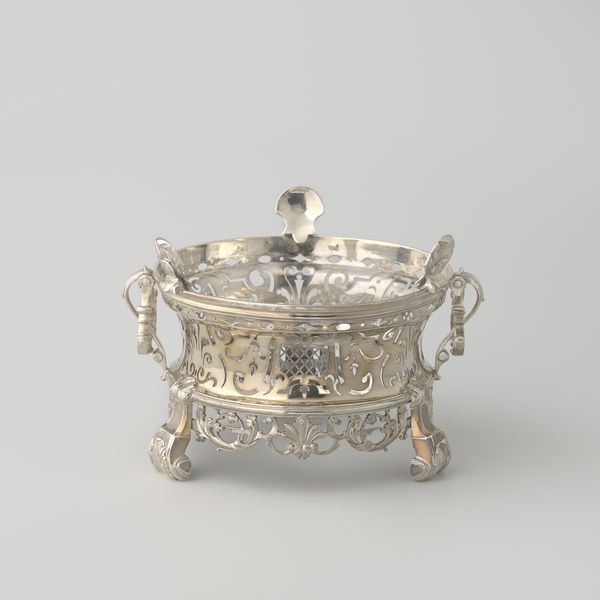
metal, glass
#
art-nouveau
#
metal
#
glass
#
decorative-art
Dimensions: height 9.5 cm, diameter 18.3 cm
Copyright: Rijks Museum: Open Domain
Editor: Here we have a *Botervloot met Jugendstilmotieven*, or butter dish with Art Nouveau motifs, created by Orivit around 1900, combining metal and glass. It’s quite striking how a utilitarian object can be so elegant! How would you interpret the significance of such ornamentation on everyday items? Curator: That's a keen observation. Art Nouveau, particularly as seen in pieces like this, challenged the rigid boundaries between fine art and craft. The turn of the century was a time of great social upheaval and philosophical shifts. Applying artistry to everyday objects became a radical act, an implicit critique of industrialization's dehumanizing effect. Do you see how the natural motifs function? Editor: I think so! The floral designs are meant to evoke nature, almost like a small garden has been captured. Curator: Exactly. And think about *who* had access to this beauty. Was this available to all members of society or did access differ by socioeconomic status or even gender roles within a household? How does that complicate our appreciation? Consider the symbolism within the context of colonial power, for example, as materials could be sourced from exploited regions. Is it still beautiful in this context? Editor: It gives me a lot to consider, the class implications within design are something I hadn't initially processed. Curator: This butter dish is not just a pretty object. It reflects complex dialogues about accessibility, class, and exploitation embedded within beauty. Understanding these nuances deepens our understanding of the piece itself, and it offers us a new lens. Editor: I’ll never look at decorative arts the same way!
Comments
No comments
Be the first to comment and join the conversation on the ultimate creative platform.
